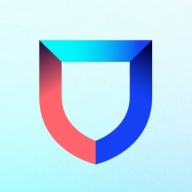

Red Hat Advanced Cluster Security for Kubernetes and Lacework FortiCNAPP are competing products designed to enhance Kubernetes security. Red Hat stands out in customer support and pricing flexibility, appealing to those seeking cost-effectiveness, while Lacework is preferred for its advanced feature set, appealing to organizations prioritizing comprehensive security features.
Features: Red Hat Advanced Cluster Security has deep integration with OpenShift, enhancing Kubernetes-specific security policies, threat detection, and vulnerability management. It offers easy management with authentication and authorization features and provides secure container connections. Lacework FortiCNAPP offers extensive cloud-native support with multi-cloud security monitoring, anomaly detection, and compliance reports for multiple standards. It excels in identifying vulnerabilities and providing insights into the security posture.
Room for Improvement: Red Hat could improve by expanding its feature set beyond Kubernetes-specific capabilities and enhancing its vulnerability management. Additionally, more flexible deployment options would be beneficial. Lacework could improve by simplifying its deployment process and offering more direct service support. Enhancing customer support to match Red Hat's levels would be beneficial, along with simplifying its extensive feature sets for easier utilization.
Ease of Deployment and Customer Service: Red Hat's deployment integrates seamlessly with existing Kubernetes infrastructure and offers robust support throughout the installation process. Lacework, while cloud-agnostic, has a more complex deployment and less direct service support than Red Hat. However, its flexibility in multi-cloud setups provides an advantage for expansive environments.
Pricing and ROI: Red Hat Advanced Cluster Security offers competitive setup costs with a focus on cost control, resulting in strong ROI for targeted Kubernetes deployments. Lacework FortiCNAPP, with higher pricing due to additional features and flexibility, may result in a slower ROI but aligns with enterprises seeking comprehensive cloud security coverage.
| Product | Market Share (%) |
|---|---|
| Red Hat Advanced Cluster Security for Kubernetes | 2.2% |
| Lacework FortiCNAPP | 1.9% |
| Other | 95.9% |


| Company Size | Count |
|---|---|
| Small Business | 4 |
| Midsize Enterprise | 4 |
| Large Enterprise | 3 |
| Company Size | Count |
|---|---|
| Small Business | 6 |
| Midsize Enterprise | 2 |
| Large Enterprise | 4 |
Lacework FortiCNAPP provides robust cloud security, combining vulnerability management and multi-cloud insight with user-friendly controls, machine learning detection, and compliance support.
Lacework FortiCNAPP specializes in cloud security by merging machine learning anomaly detection with agent-based vulnerability management to offer detailed alerts and compliance reports. Its comprehensive approach allows continuous monitoring across AWS and Kubernetes, providing insights from an attacker's perspective. The platform offers automation and seamless Slack integration, facilitating collaborative and efficient cloud security management. Users value its ability to handle multi-cloud environments and scan IAC scripts, configurations, and compute nodes across AWS and GCP.
What are the key features?Organizations across sectors leverage Lacework FortiCNAPP for cloud security, focusing on compliance, security posture, and vulnerability management. It is widely used for monitoring AWS and Kubernetes environments, scanning IAC scripts, configurations, and securing compute nodes. It supports multi-cloud security posture management and log ingestion, enabling companies to maintain strong cloud infrastructures without dedicated security layers.
Red Hat Advanced Cluster Security for Kubernetes is a Kubernetes-native container security solution that enables your organization to more securely build, deploy, and run cloud-native applications from anywhere. With its built-in security across the entire software development life cycle, you can lower your operational costs, reduce operational risk, and increase developer productivity while improving your security posture immediately. In addition, Red Hat Advanced Cluster Security integrates with security tools and DevOps in an effort to help you mitigate threats and enforce security policies that minimize operational risk to your applications. It also enables you to provide developers with actionable, context-rich guidelines integrated into existing workflows, along with tooling to support developer productivity. The solution is suitable for small, medium, and large-sized companies.
Red Hat Advanced Cluster Security for Kubernetes Features
Red Hat Advanced Cluster Security for Kubernetes has many valuable key features. Some of the most useful ones include:
Red Hat Advanced Cluster Security for Kubernetes Benefits
There are many benefits to implementing Red Hat Advanced Cluster Security for Kubernetes. Some of the biggest advantages the solution offers include:
Reviews from Real Users
PeerSpot user Igor K., Owner/Full Stack Software Engineer at Maraphonic, Inc., says, “The solution allows teams to create their own virtual spaces and share resources. The most valuable feature is the ability to share resources.”
We monitor all Container Security reviews to prevent fraudulent reviews and keep review quality high. We do not post reviews by company employees or direct competitors. We validate each review for authenticity via cross-reference with LinkedIn, and personal follow-up with the reviewer when necessary.